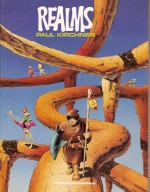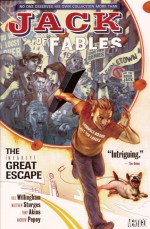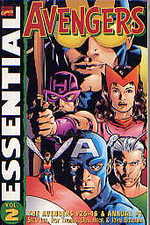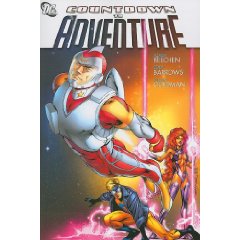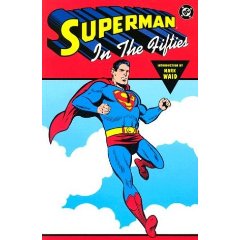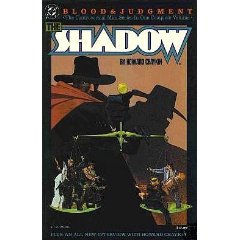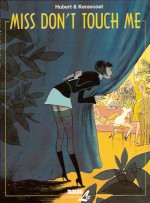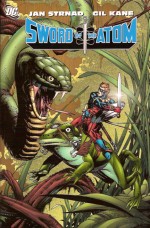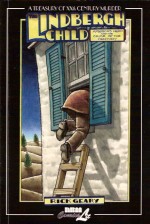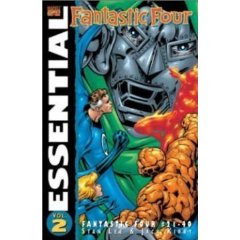
By Stan Lee, Jack Kirby & various (Marvel)
ISBN 0-7851-0731-2
This second big value, low priced compendium starring the World’s most popular adventure quartet collects Fantastic Four #21-40, the second (1964) Annual and includes a seldom seen team-up of the Human Torch and Spider-Man from Strange Tales Annual #2.
By this juncture the FF were firmly established and creators Stan Lee and Jack Kirby were well on the way to toppling DC/National Comics from their decades-held top spot with their brash, folksy and consciously contemporaneous sagas, blending high concept, low comedy, trenchant melodrama and breathtaking action.
The first tale here is from Fantastic Four #21 (cover-dated December 1963) guest-starring Nick Fury, then the lead character in Marvel’s only war comic Sgt. Fury and his Howling Commandos but eventually to metamorphose into the company’s answer to James Bond. Here he’s a CIA agent seeking the team’s aid against a sinister demagogue called ‘The Hate-Monger’ in a cracking yarn with a strong message, inked by comics veteran George Roussos, under the protective nom-de-plume George Bell.
Unseen since the premiere issue, #22 finally saw ‘The Return of the Mole Man!’ by the same creative team; another full-on fight-fest, chiefly notable for the debut of the Invisible Girl’s new powers of projecting force fields and “invisible energy” – which would eventually make her one of the mightiest characters in the company’s pantheon.
Number #23 heralded ‘The Master Plan of Doctor Doom!’, which introduced his frankly mediocre minions the Terrible Trio of Bull Brogin, Handsome Harry and Yogi Dakor, although the eerie menace of “the Solar Wave” was enough to raise the hackles on my five year old neck. Issue #24’s ‘The Infant Terrible!’ was a sterling yarn of extra-galactic menace and innocence, followed by a two-part epic that truly defined the inherent difference between Lee and Kirby’s work and everybody else at that time.
Fantastic Four #25 and #26 featured a cataclysmic clash that had young heads spinning in 1964 and lead directly to the Emerald Behemoth finally regaining a strip of his own. In ‘The Hulk Vs The Thing’ and ‘The Avengers Take Over!’ – a fast-paced, all-out Battle Royale resulted when the disgruntled man-monster came to New York in search of side-kick Rick Jones, and only an injury-wracked FF stood in the way of his destructive rampage.
A definitive moment in the character development of the Thing, the action was ramped up when a rather stiff-necked and officious Avengers team horned in claiming jurisdictional rights on “Bob” Banner (this tale is plagued with pesky continuity errors which would haunt Stan Lee for decades) and his Jaded Alter Ego. Notwithstanding the bloopers, this is one of Marvel’s key moments and still a visceral, vital read.
The creators had hit on a winning formula by including their other stars in guest-shots – especially as readers could never anticipate if they would fight with or beside the home team. ‘The Search for Sub-Mariner!’ again found the sub-sea anti-hero in amorous mood, and when he abducted Sue Storm the boys called in Doctor Strange, Master of the Mystic Arts, to aid them. Issue #28 is a superb team-up tale too, most notable (for me at least) for the man who replaced George Roussos.
‘We Have to Fight the X-Men!’ found the teams battling due to the machinations of the Puppet Master and the Mad Thinker, but the inclusion of Chic Stone, Kirby’s most simpatico and expressive inker, elevates the art to indescribable levels of quality.
‘It Started on Yancy Street!’ (FF#29) may start low-key in the slum where Ben Grimm grew up but with the reappearance of the Red Ghost and his Super-Apes the action quickly goes Cosmic, and the next issue introduced evil alchemist ‘The Dreaded Diablo!’ who nearly broke up the team while conquering the world from his spooky Transylvanian castle.
Next up is Fantastic Four Annual #2 from 1964, which boldly led off with ‘The Fantastic Origin of Doctor Doom!’, before storming into the climactic adventure epic ‘The Final Victory of Dr. Doom!’ The monthly wonderment resumes with #31’s ‘The Mad Menace of the Macabre Mole Man!’ which balanced a loopy plan to steal entire streets of New York City with a portentous sub-plot featuring a mysterious man from Sue’s past, as well as renewing the quartet’s somewhat fractious relationship with the Mighty Avengers.
The secret of that mystery man was revealed in the next issue’s ‘Death of a Hero’, a powerful tale of tragedy and regret that spanned two galaxies, and which starred the uniquely villainous Invincible Man who was not at all what he seemed…
‘Side-by-Side with Sub-Mariner!’ brought the aquatic anti-hero one step closer to his own series when the team lent surreptitious aid to the embattled undersea monarch as the deadly barbarian Attuma made his debut in FF #33, whilst in ‘A House Divided!’ the team were nearly destroyed by Mr. Gideon, the Richest Man in the World.
‘Calamity on the Campus!’ saw the team visit Reed Richard’s old Alma Mater in a tale designed to pander to the burgeoning college fan-base Marvel was cultivating (there’s even a cameo role for Peter Parker), but the rousing yarn that brought back Diablo and introduced the monstrous homunculus Dragon Man easily stands up as a classic on its own merits. Fantastic Four #36 introduced the team’s theoretical nemeses with ‘The Frightful Four’ a team of villains comprising The Wizard, Sandman, Trapster (he was still Paste Pot-Pete here, but not for long) and an enigmatic new character called Madame Medusa, whose origin would have a huge impact on the heroes in months to come. Also notable in this auspicious but inconclusive duel was the announcement after many months of Reed and Sue’s engagement – in itself a rare event in the realm of comic books.
Issue #37 found the team spectacularly travelling to the homeworld of the shape-shifting Skrulls in search of justice in ‘Behold! A Distant Star!’ and they returned only to be ‘Defeated by the Frightful Four!’ in FF# 38, a momentous tale with a startling cliff-hanger that marked Chic Stone’s departure in landmark manner.
Frank Giacoia, under the pseudonym Frank Ray, stepped in to ink #39’s ‘A Blind Man Shall Lead Them!’ wherein a powerless Fantastic Four were attacked by an enraged Doctor Doom and only the sightless vigilante Daredevil had a chance to keep them alive. The tale concluded in #40 with ‘The Battle of the Baxter Building‘ as Vince Colletta assumed the ink chores for a bombastic conclusion that perfectly displays the indomitable power and inescapable tragedy of the brutish Thing.
There’s pin-ups galore scattered throughout this volume and as an added bonus a Spider-Man/Human Torch clash from Strange Tales Annual #2 in 1963, a period when the Flaming Kid had his own solo series (see Essential Human Torch, ISBN 0-7851-1309-6).
‘On the Trail of the Amazing Spider-Man’ is a mediocre story at best, blessed with superb art from Kirby inked by Steve Ditko, but sadly even that saving grace is marred here by some pretty amateurish application of grey-tones, which reduce too many pages to monochromatic mud (hopefully just a glitch that can corrected in later editions).
Despite this last cavil this is still a magnificent book to read and these are the tales that built a comics empire. The verve, imagination and sheer enthusiasm shines through and the wonder is there for you to share. If you’ve never thrilled to these spectacular sagas then this black and white book of marvels is your best and most economical key to another world and time.
© 1963, 1964, 1965, 2003, 2007 Marvel Characters, Inc. All Rights Reserved.
